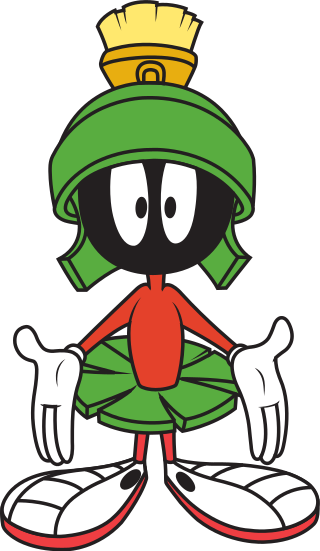
Marvin the Martian is an alien race character from the Looney Tunes and Merrie Melodies series. He frequently appears as a villain in cartoons and video games, and wears a Roman soldier's helmet and skirt. The character has been voiced by Mel Blanc, Joe Alaskey, Bob Bergen and Eric Bauza, among others.

Pyst is an adventure computer game released in October 1996. It was created as a parody of the highly successful adventure game Myst. Pyst was written by Peter Bergman, a co-founder of the Firesign Theatre, and was published by Parroty Interactive, with Bergman, Stallone, Inc. as co-publisher. Mindscape began distributing the game on August 20, 1997. The parody features full motion video of actor John Goodman as "King Mattruss", the ruler of "Pyst Island". Versions of the game were produced for both the Windows PC and Apple Macintosh operating systems.

Oddworld: Abe's Oddysee is a platform video game developed by Oddworld Inhabitants and published by GT Interactive. It was released in 1997 for the PlayStation game console, and computers running MS-DOS and Microsoft Windows in North America, Australia, New Zealand, and Europe. A version for the Sega Saturn was planned but was never released. Emulated versions for the PlayStation 3 via PlayStation Network were released in 2009, 2010, and 2013. It was then later released as a PS5 emulation in 2022 in Asia, and then later parts of the world.

Def Jam Vendetta is a 2003 professional wrestling video game that combines hip hop with pro wrestling. It was released for both the PlayStation 2 & GameCube by Electronic Arts under the EA Sports BIG label in North America & Europe, and the EA Games label in Japan. It was EA's first attempt at a wrestling game since the widely panned WCW Backstage Assault. Several hip hop artists were featured in the game, including DMX, Method Man, Redman, Ludacris, N.O.R.E., Capone, Scarface, Ghostface Killah, Keith Murray, WC, Joe Budden and DJ Funkmaster Flex; all of which at the time were artists of Def Jam. Singer Christina Milian was also featured in the game as "Angel". A sequel, Def Jam: Fight for NY, was released on September 20, 2004, to largely positive reviews.
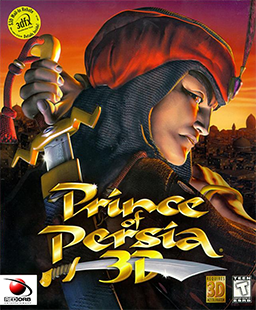
Prince of Persia 3D is a 1999 action-adventure video game developed by Mindscape, and published by Red Orb Entertainment for Microsoft Windows. A port for the Dreamcast was developed by Avalanche Software and published by Mattel Interactive in North America the following year under the title Prince of Persia: Arabian Nights. It is the first 3D installment in the Prince of Persia series, and the final game in the trilogy that started with the original 1989 game. Taking the role of the titular unnamed character rescuing his bride from a monstrous suitor's schemes, gameplay follows the Prince as he explores environments, platforming and solving puzzles while engaging in combat scenarios.

Tex Murphy is a series of adventure games designed by Chris Jones. The eponymous main character is portrayed in live-action by Chris Jones himself. He is characterized as a down-on-his-luck private investigator in a post-nuclear future San Francisco, borrowing tropes from both the film noir and cyberpunk genres.

Buck Rogers: Countdown to Doomsday is a role-playing video game set in the Buck Rogers XXVC universe. It was published in 1990 by Strategic Simulations for MS-DOS, Commodore 64, and Amiga. A Sega Genesis version was released in 1991. Buck Rogers: Matrix Cubed is the 1992 sequel.

Martian Gothic: Unification is a 2000 survival horror video game developed by Creative Reality for Microsoft Windows and Coyote Developments for the PlayStation and published by TalonSoft for Microsoft Windows and Take-Two Interactive for the PlayStation. It takes place on a Martian base in the year 2019, where a crew of three have been tasked to investigate 10 months of radio silence. They soon find that the dead crew members of the base have been killed, and now become re-animated bloodthirsty zombies.

Alfred Chicken is a platform video game developed by Twilight and published by Mindscape. The game was released for Amiga, Amiga CD32, Game Boy, NES, Super NES in 1993 and February 1994, in Europe and North America, respectively. A Europe-exclusive remake of the game, entitled Alfred's Adventure, was developed by Möbius Entertainment and released by SCi for Game Boy Color in June 2000. Another remake, named Alfred Chicken, was also developed by King Monkey, a division of Möbius Entertainment, and released by Sony Computer Entertainment for PlayStation in 2002.
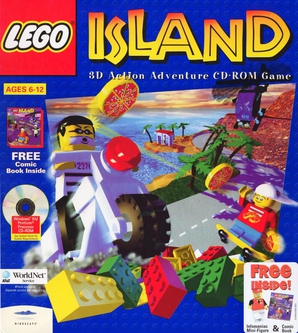
Lego Island is a Lego-themed open world action-adventure game developed and published by Mindscape. It was released for Windows on September 26, 1997, as the second Lego video game overall and the first one outside Japan. In the "proto-open world" game, players explore the eponymous island as one of five unique minifigure characters, and can build vehicles and complete side quests; the game's main story involves Pepper Roni, a pizza delivery boy, and his efforts to stop an escaped prisoner known as the Brickster from destroying the island.
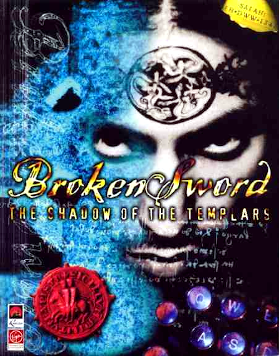
Broken Sword: The Shadow of the Templars is a 1996 point-and-click adventure game developed by Revolution Software. It is the first in the Broken Sword series, co-written and directed by Charles Cecil. The player assumes the role of George Stobbart, an American tourist in Paris, as he attempts to unravel a deep conspiracy involving a sinister cult and a hidden treasure, seeing him travel to various locations around Europe and the Middle East. The game's storyline was conceived to feature a serious tone and heavily influenced by research on Knights Templar by Cecil, but was also interlaced with humor and graphics in the style of classic animated films.

The Dark Eye is a 1995 first-person psychological horror adventure game developed by Inscape and published by Warner Interactive Entertainment for Windows and Mac.

Chaser is a first-person shooter action video game developed by Cauldron. The game is built on the CloakNT 3D engine. It was re-released on Steam and GOG.com in 2011.

Gadget: Invention, Travel, & Adventure is an adventure game designed by Haruhiko Shono and first released by Synergy Interactive in 1993, following his earlier works Alice: An Interactive Museum (1991) and L-Zone (1992). Like Shono's earlier titles, Gadget uses pre-rendered 3D computer graphics and resembles a point-and-click adventure game similar to Myst (1993), but with a strictly linear storyline culminating in a fixed finale. It thus sometimes tends to be classified more as an interactive movie rather than a video game. The story centers around a future dominated by retro technology from the 1920s and 1930s, especially streamlined locomotives and flying machines.

Aliens: A Comic Book Adventure is a 1995 adventure game developed by Cryo Interactive Entertainment and published by Mindscape for MS-DOS. It is loosely based on the Aliens comic book series with many references to the graphic novel Labyrinth.
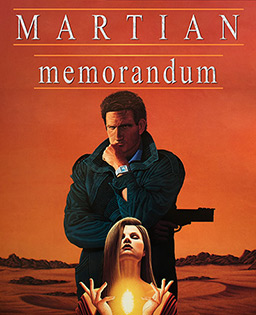
Martian Memorandum is a dystopian cyberpunk/noir graphic adventure game that was originally released in 1991 for MS-DOS. It was developed and published by Access Software. The game is the second in the series of Tex Murphy mysteries; its immediate sequel is Under a Killing Moon. The game is set in 2039, several years after Mean Streets.

Destroy All Humans! is an open world action-adventure video game franchise that is designed as a parody of Cold War-era alien invasion films. Destroy All Humans! and Destroy All Humans! 2 were released for the PlayStation 2 and Xbox; Destroy All Humans! Big Willy Unleashed was released for the Wii; and Destroy All Humans! Path of the Furon was released for the Xbox 360 and PlayStation 3. A remake of the original game and its sequel were developed by Black Forest Games and were released in 2020 and 2022, respectively.

Gunnm: Martian Memory is a 1998 action role-playing video game for the PlayStation based on the Battle Angel Alita manga series. To date it is the only Battle Angel Alita video game, and the only game developed by Yukito Products.

K Dash is a character from The King of Fighters fighting game series developed by SNK. He debuted as the leader of the Hero Team in The King of Fighters '99, released in 1999. He often stars as the reluctant hero. K′ is a young man who lost all his memories when the NESTS syndicate captured him and injected the DNA of Kyo Kusanagi to replicate his pyrokinetic abilities. While rebelling against organization, K' forms multiple bonds with other NESTS agents. Aside from the main series, K' also appears in several other media series, such as spin-offs and crossover video games, as well as printed adaptations of the series.



















